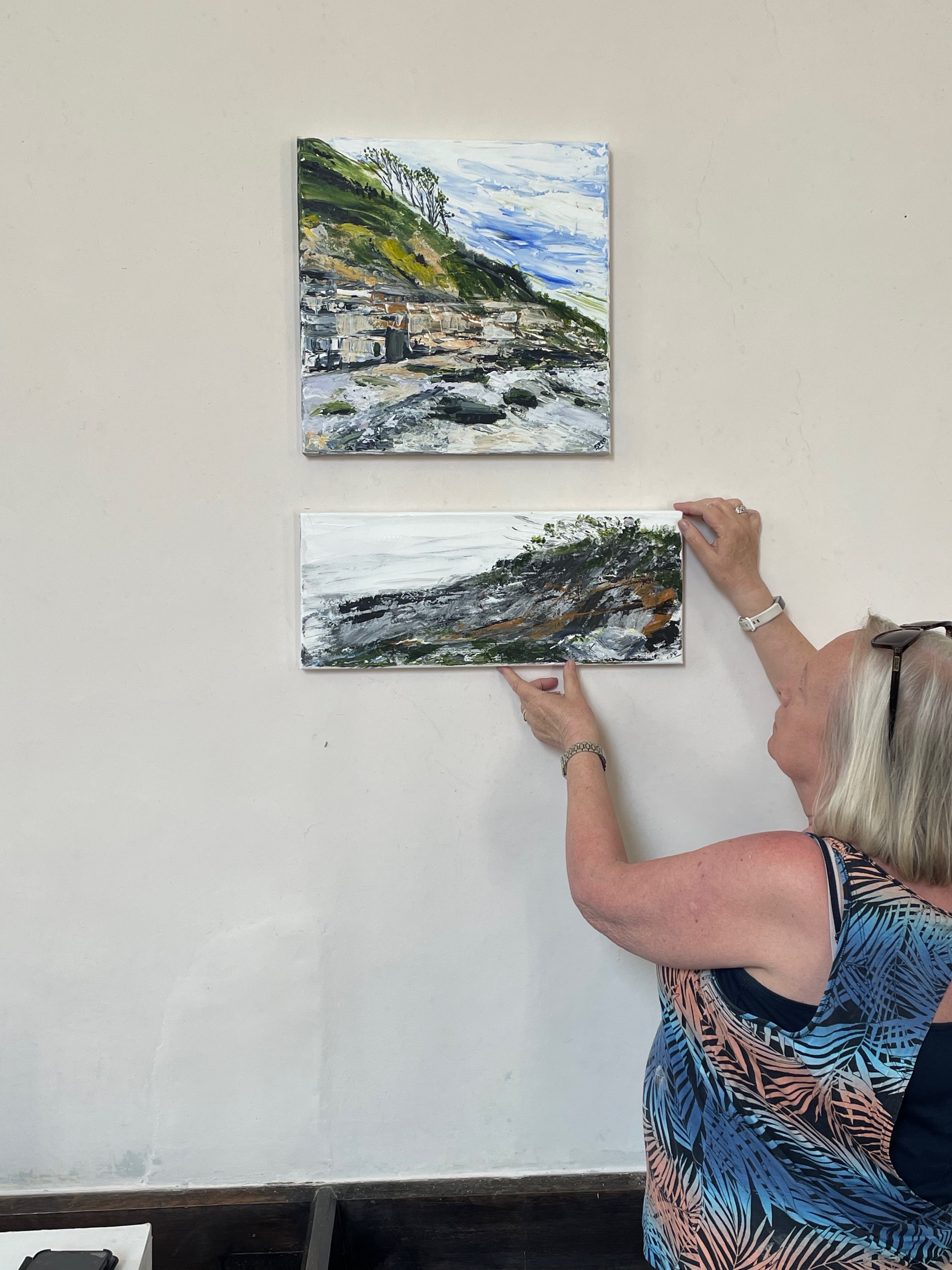How To Capture Emotion in Your Art
- Sue

- 8 hours ago
- 4 min read
🎨 How to Capture Emotion in Your Art
When I create a painting it comes from my heart, how I feel at the time or how a place makes me feel.
I don't create a painting because its more likely to sell or what people want to see.
Every piece of my art tells a story — not just through form and colour, but through feeling. The most powerful artworks aren’t necessarily the most technically perfect; they’re the ones that make you feel something. Whether it’s joy, grief, nostalgia, or peace, emotion is what connects your art to your prospective collectors.
So how do you capture emotion in your art?
Here are a few ideas to help your work resonate on a deeper level.
1. Start with an Honest Intention
Emotion in art begins before any paint hits the canvas. Ask yourself:
How am I feeling right now?
What am I wanting to express?
What do I want the viewer to feel?
Do I want to convey a message?
What moves me from the depths of my being?
You don’t need to have a perfect answer — sometimes just having the intention of a feeling is enough. The clearer your emotional intent, the more real your artwork will feel.
2. Let Colour Speak for You
The use of colour is a huge topic, but here are a few basic guidelines.
Colour is an emotional language and how you use it can completely transform the message or feeling that you want to convey.
Warm tones like reds, oranges, and yellows can convey passion, warmth, or energy, while cool blues and greens can evoke calm, melancholy, or introspection.
I use blues/greens a lot, I love the feeling of pace they create within me, especially in my abstract work.

Look at Ocean Deep, how does it make you feel ?
Does it draw you in?
Immerse you in another world?
Try different combinations and see how they affect your emotions.
Use high contrast for tension or excitement.
Use unexpected colour combinations to create emotional complexity.
Don’t just pick colours that look nice — pick ones that feel right.
3. Use Movement and Gesture
Emotion lives in the movement of a piece too — in the looseness of a brushstroke or or the way a tree leans into the wind.
Trees move me in ways I can’t always explain. I find myself painting them again and again, each one carrying a piece of my emotion.
Try using expressive, sweeping lines to suggest freedom or energy.
For example In Van Gogh’s “Starry Night,” the swirling, rhythmic lines of the sky create a sense of movement and emotional intensity.
Asymmetry and irregular composition often add a sense of unpredictability or tension.
Let your body move with the emotion you’re trying to capture — your feelings will translate into the work.
4. Focus on Mood, Not Perfection
When you chase technical perfection, you sometimes lose spontaneity. Don’t be afraid to leave imperfections, smudges, or rough textures. These “flaws” can add emotional honesty and feeling.
Some of the most memorable art feels raw. It is more impactful.
I very much work on a no rules basis, it makes me feel freer and able to experiment.
5. Use Symbolism and Storytelling
Symbols allow emotion to take visual form. A wilted flower, a lone tree, a cracked wall, a burst of light — these can all represent something deeper without needing words.
Think about:
What visual elements represent your emotions?
What metaphors resonate with your own experience?
In my new series of paintings hidden forms have emerged through the layers. Almost always the wings of a bird, and on one occasion, an angel (see below) This is coming from deep within me, sometimes just trust that the story will appear.
You’re not just painting an image — you’re communicating something personal and universal at the same time.

6. Listen to Your Emotions While You Work
Your emotional state shifts as you create. Maybe you start frustrated and end peaceful, I know I do. Let that evolution shape the artwork.
Sometimes the best thing you can do is step away, breathe, and return later with fresh eyes. I often place a piece where I walk past it throughout the day, I then see where to go next with it.
The process itself is emotional — and that journey leaves its tracks in the finished piece.
7. Connect With Your Viewer
Art becomes complete when it’s seen. Remember that every viewer brings their own emotions and stories to your work. Leave space for interpretation — you don’t need to explain everything.
When someone tells you that your art “made them feel something,” that’s when you know you’ve succeeded.
I’d like to share with you a testimonial if I may, from a collector, about how my art made them feel.
When I touch someone's soul with my art it has a massive positive emotional effect on me too.
💭 Final Thoughts
Capturing emotion in art isn’t about perfect technique or flawless execution — it’s about truth. Every brushstroke, every line, every texture carries a piece of you. When you stop worrying about how your work should look and instead focus on how it feels, your art begins to breathe on its own.
Yes, it is a challenge to stop chasing perfection, but we must — because true expression lives in imperfection. It’s in the unexpected strokes, the unplanned moments, and the raw honesty of our work that art comes alive. Let go, trust yourself, and let the emotion lead; that’s where the real beauty resides
Art is, at its core, a conversation between souls — yours and the viewer’s. Speak from the heart, and they’ll hear you.




Comments